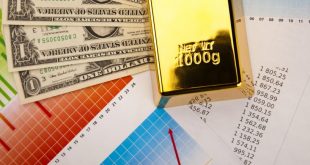US stocks fluctuated on Tuesday and the 3 main indices were on track to recover from early losses as investors followed Fed Chair Senate confirmation hearing which strengthened the case for tightening to tame inflation although Powell predicted a “long road to normal” in monetary policy.
The US inflation report due tomorrow is likely to show that inflationary pressures persisted in the end of the year. On the corporate front, shares of Intel rose 0.4% after the company named Micron Technology Chief Financial Officer David Zinsner as its new CFO while IBM stocks were down 4% after UBS downgraded it to sell from neutral.
Wall Street tech shares rose sharply on Tuesday after whipsawing in a volatile prior session. The broad-based S&P 500 index had added 0.5 per cent by the late US morning after opening lower in early New York dealings. Its information technology sub-index gained 1.1 per cent. The Nasdaq Composite gauge climbed 1.2 per cent. The tech-heavy Nasdaq had briefly dropped into correction territory on Monday before recovering to end the session 0.1 per cent higher.
Markets have struggled for direction in recent days as traders debate whether or not inflation has peaked and how aggressively the US Federal Reserve will act to reverse it. In an appearance before the Senate banking committee on Tuesday, Jerome Powell, the Fed chair, said that high inflation took a toll and the central bank would act to prevent it from becoming entrenched.
Following strong US jobs data last week, and ahead of figures on Wednesday that economists polled by Reuters expect to show US consumer prices rose by 7 per cent in the year to December, markets have priced in the Fed’s first interest rate rise of the pandemic era by March. Goldman Sachs, the investment bank, expects four US rate increases this year.
It is all about the Fed now and nothing else matters. The US central bank, which began buying about $120bn of Treasuries and mortgage-backed securities a month in March 2020 to suppress borrowing costs and insulate markets from the shocks of coronavirus, has already reduced its purchases and is preparing to reduce its $9 trillion balance sheet.
Quantitative easing had led investors further along the risk curve, by raising the prices and reducing the income yields on bonds, so investors go to equities and then they go into the more speculative areas like unprofitable technology companies.
The year-on-year inflation rates everyone is panicking about are misleading because they include large paybacks for the collapse in prices in the first year of the pandemic. Governments and central banks have obvious incentives to keep borrowing costs down because of high levels of government and corporate debt that had built up during the era of ultra-low interest rates.
The yield on the benchmark 10-year US Treasury note dipped 0.02 percentage points to 1.76 per cent, after trading above 1.8 per cent on Monday. The yield on the two-year Treasury note, which closely tracks interest rate expectations, was steady at 0.901 per cent.

 Noor Trends News, Technical Analysis, Educational Tools and Recommendations
Noor Trends News, Technical Analysis, Educational Tools and Recommendations




